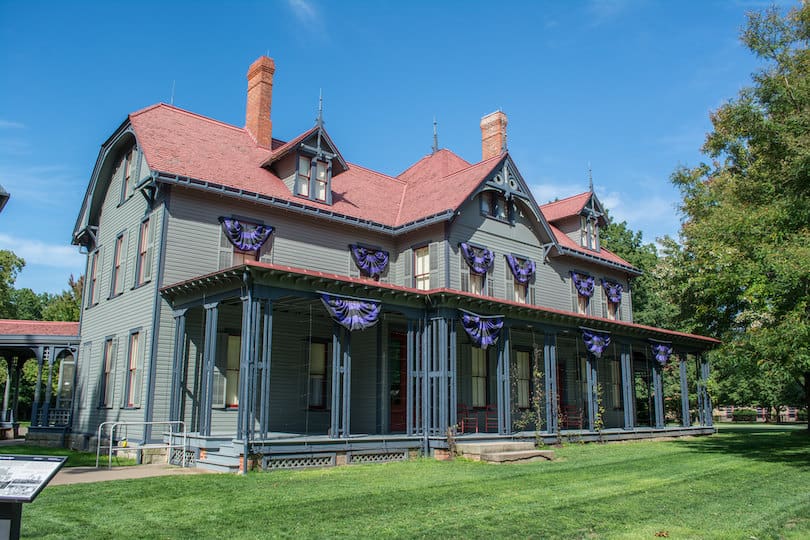Sarnath, located near Varanasi in Uttar Pradesh, is one of the most sacred Buddhist pilgrimage sites in India. Revered as the place where Lord Buddha delivered his first sermon after attaining enlightenment, Sarnath exudes spiritual energy and historical significance. Beyond its religious importance, Sarnath offers a blend of ancient ruins, museums, and serene landscapes that captivate travelers. In this article, we explore the Top 15 Places to Visit in Sarnath , each offering a unique glimpse into the region’s rich heritage and tranquil ambiance.
1. Dhamek Stupa: A Monument of Enlightenment
The Dhamek Stupa is one of the most iconic landmarks in Sarnath and a symbol of Buddhist architecture. Built during the reign of Emperor Ashoka in the 3rd century BCE, it marks the site where Lord Buddha delivered his first sermon, known as the “Turning of the Wheel of Dharma.”
Architectural Significance
Standing at 43.6 meters tall and 28 meters in diameter, the stupa is adorned with intricate carvings depicting floral patterns and geometric designs. Its cylindrical structure reflects the simplicity and grandeur of early Buddhist architecture. The stupa’s base features inscriptions in Brahmi script, offering insights into its historical context. Archaeologists believe that the original stupa was much smaller and was later expanded by subsequent rulers.
Spiritual Importance
For Buddhists, the Dhamek Stupa represents the essence of Buddha’s teachings on the Four Noble Truths and the Eightfold Path. Pilgrims circumambulate the stupa while chanting mantras, creating an aura of devotion and peace. It is believed that walking around the stupa seven times can bring blessings and good fortune.
Visitor Experience
The stupa is surrounded by lush gardens, making it an ideal spot for meditation and reflection. Evening visits are particularly enchanting, as the golden hues of sunset bathe the monument in a divine glow. Guided tours provide detailed explanations of the stupa’s history and significance, enhancing the visitor experience.
2. Chaukhandi Stupa: Gateway to Enlightenment
The Chaukhandi Stupa is believed to mark the spot where Lord Buddha met his first five disciples after attaining enlightenment. This ancient structure serves as a gateway to Sarnath’s spiritual journey.
Historical Background
Originally built during the Gupta period, the stupa was later modified by Akbar in the 16th century to honor his father Humayun. Its octagonal tower adds a unique architectural element, distinguishing it from other stupas in the region. The tower’s design reflects Mughal influences, blending seamlessly with the older Buddhist structure.
Scenic Beauty
Set amidst verdant surroundings, the Chaukhandi Stupa offers panoramic views of the surrounding landscape. Visitors often pause here to absorb the tranquility before proceeding to other sites. During sunrise and sunset, the stupa glows with a soft, ethereal light, creating a mesmerizing sight.
Visitor Insights
Photography enthusiasts will find ample opportunities to capture the stupa’s intricate details and its harmonious integration with nature. The area around the stupa is also popular for picnics and family outings.
3. Mulagandha Kuti Vihar: A Modern Marvel
The Mulagandha Kuti Vihar , established in 1931, is a modern Buddhist temple that stands on the site of Buddha’s original meditation hut. Designed by Japanese architect Kosetsu Nosu, it combines traditional Indian and contemporary styles.
Artistic Highlights
The temple houses exquisite frescoes painted by Japanese artist Kosetsu Nosu, depicting scenes from Buddha’s life. The central shrine contains a golden statue of Buddha seated in the Bhumisparsha Mudra (earth-touching gesture), symbolizing his victory over Mara (temptation).
Meditation Hall
The vihar includes a meditation hall where visitors can practice mindfulness and connect with their inner selves. Regular discourses and meditation sessions are conducted by resident monks, providing a deeper understanding of Buddhist philosophy.
Cultural Exchange
The temple attracts pilgrims and tourists from across the globe, fostering cultural exchange. Its library houses rare manuscripts and books on Buddhism, making it a valuable resource for scholars.
4. Sarnath Archaeological Museum: A Treasure Trove of Antiquities
The Sarnath Archaeological Museum is a must-visit for history enthusiasts. Established in 1910, it houses a vast collection of artifacts excavated from the Sarnath site.
Key Exhibits
Highlights include the Lion Capital of Ashoka , which served as the national emblem of India, and numerous Buddha statues in various postures. Inscriptions, terracotta figurines, and ancient coins provide valuable insights into Sarnath’s past. The museum also displays tools, pottery, and jewelry from the Mauryan and Gupta periods.
Preservation Efforts
The museum plays a crucial role in preserving and showcasing Sarnath’s rich cultural heritage. Interactive displays and guided tours enhance the visitor experience. Special exhibitions are organized periodically to highlight specific aspects of Sarnath’s history.
5. Deer Park (Mrigadava): Where Dharma Was Born
The Deer Park , also known as Mrigadava, is the very location where Buddha delivered his first sermon. Today, it is a peaceful park dotted with ancient ruins and monuments.
Symbolic Significance
Legend has it that deer roamed freely in this area during Buddha’s time, and he chose it as a sanctuary for delivering his teachings. The park now features replicas of Ashokan pillars and stupas, adding to its historical charm.
Activities
Visitors can stroll through the park, meditate under the shade of trees, or simply enjoy the serene environment. It’s a perfect place for families and solo travelers alike. Birdwatchers will delight in spotting migratory birds that frequent the park during winter.
6. Ashoka Pillar: A Testament to Dharma
The Ashoka Pillar at Sarnath is one of the most significant relics from Emperor Ashoka’s reign. Although the original pillar lies broken, its Lion Capital remains intact and is displayed at the Sarnath Museum.
Historical Context
The Ashoka Pillar was erected in the 3rd century BCE by Emperor Ashoka, a convert to Buddhism who played a pivotal role in spreading the religion across his vast empire. Inscribed with edicts promoting non-violence, compassion, and moral living, the pillar reflects Ashoka’s commitment to propagating the teachings of Lord Buddha. The inscriptions are written in Brahmi script, making them invaluable for understanding ancient Indian history and language.
The Lion Capital , which once crowned the pillar, is now India’s national emblem. It features four lions standing back-to-back on a circular abacus adorned with carvings of a bull, a horse, a lion, and an elephant, separated by wheels (Dharmachakras). These symbols represent strength, courage, justice, and sovereignty, embodying the essence of Ashoka’s vision for a harmonious society.
Visitor Insights
While the original pillar is fragmented and lies in ruins near the Dhamek Stupa, a replica has been erected nearby to allow visitors to appreciate its grandeur. Standing beside the pillar, one can almost feel the weight of history and the profound impact of Ashoka’s dharma-centric policies. The site serves as a reminder of Sarnath’s pivotal role as a center for disseminating Buddhist philosophy.
Guided tours provide fascinating insights into the pillar’s construction, its symbolic elements, and its influence on modern India. Visitors often take photographs with the replica, capturing both the architectural splendor and the spiritual significance of this ancient relic.
7. Thai Monastery: A Slice of Thailand in India
The Thai Monastery , built by the Royal Thai Government, is a stunning example of Thai Buddhist architecture. Its gleaming white structure and golden spires create a striking contrast against the Indian skyline.
Architectural Features
The monastery’s design reflects traditional Thai aesthetics, characterized by steeply sloping roofs, intricate wood carvings, and ornate decorations. The main prayer hall houses a massive golden Buddha statue seated in the Bhumisparsha Mudra (earth-touching gesture), radiating serenity and grace. The courtyard is adorned with lotus ponds and ornamental plants, creating a tranquil atmosphere that invites contemplation and meditation.
One of the standout features of the monastery is its use of gold leaf and vibrant colors, which give it a regal appearance. Frescoes depicting scenes from Buddha’s life adorn the walls, adding artistic depth to the space. The meticulous attention to detail in every aspect of the monastery’s construction highlights the craftsmanship of Thai artisans.
Cultural Exchange
The Thai Monastery serves as a bridge between India and Thailand, fostering cultural exchange and mutual understanding. Visitors can participate in meditation retreats led by resident monks, gaining firsthand experience of Theravada Buddhist practices. Workshops on mindfulness, stress reduction, and Buddhist philosophy are regularly conducted, catering to both locals and international tourists.
Festivals like Songkran (Thai New Year) are celebrated with great enthusiasm, drawing crowds from all over. Traditional Thai music, dance performances, and rituals add vibrancy to these celebrations, offering visitors a taste of Thai culture. The monastery also hosts interfaith dialogues and events aimed at promoting peace and harmony.
8. Tibetan Temple: A Hub of Spirituality
The Tibetan Temple in Sarnath is a vibrant representation of Tibetan Buddhist culture. Built by Tibetan refugees, it reflects the resilience and faith of the community.
Vibrant Murals
The temple walls are adorned with colorful murals depicting scenes from Tibetan mythology and Buddhist teachings. These paintings narrate the Jataka tales (stories of Buddha’s previous lives) and illustrate key principles of compassion, wisdom, and detachment. Prayer wheels line the corridors, inviting visitors to spin them while reciting mantras such as “Om Mani Padme Hum.” Each rotation of the wheel is believed to generate positive karma and blessings.
Inside the temple, statues of Buddha in various postures—seated, standing, and reclining—are placed alongside depictions of Bodhisattvas and other deities. The central shrine houses a large statue of Shakyamuni Buddha, surrounded by offerings of flowers, incense, and butter lamps. The air is filled with the soothing sound of chanting and the fragrance of burning incense, creating an immersive spiritual experience.
Community Engagement
The Tibetan Temple plays a vital role in preserving Tibetan culture and traditions. Regular teachings and ceremonies are conducted by resident monks, providing opportunities for learning and spiritual growth. Visitors can attend pujas (prayer sessions), listen to discourses, or simply sit in silence amidst the peaceful surroundings.
The temple also provides accommodation for pilgrims and volunteers, allowing them to immerse themselves in the monastic lifestyle. Handmade crafts, thangkas (scroll paintings), and prayer flags are available for purchase, supporting the livelihood of local artisans and the monastery itself.
9. Bodhi Tree: A Symbol of Enlightenment
The Bodhi Tree in Sarnath is a sapling descended from the original Bodhi Tree in Bodh Gaya, under which Buddha attained enlightenment. It serves as a focal point for meditation and prayer.
Rituals and Practices
Devotees gather around the tree to chant sutras, offer prayers, and perform prostrations. The area beneath the tree is often filled with marigold garlands, incense sticks, and oil lamps, creating a fragrant and devotional ambiance. Many pilgrims tie prayer flags to the branches, believing that their wishes will be carried by the wind to the heavens.
During special occasions like Buddha Purnima (the full moon day commemorating Buddha’s birth, enlightenment, and passing away), the Bodhi Tree becomes a hub of activity. Devotional songs, processions, and rituals mark the celebrations, attracting thousands of devotees.
Tranquil Atmosphere
The tree’s shaded canopy creates a peaceful environment, making it an ideal spot for introspection and relaxation. Many visitors spend hours sitting quietly under the tree, absorbing its spiritual energy. The gentle rustling of leaves and the chirping of birds add to the serene atmosphere, making it easy to disconnect from worldly concerns and focus on inner peace.
For photography enthusiasts, the Bodhi Tree offers stunning visuals, especially during sunrise and sunset when the soft light filters through the branches.
10. Jain Temple: A Blend of Faiths
The Jain Temple in Sarnath highlights the coexistence of different religions in the region. Dedicated to Tirthankara Shanti Nath, it showcases exquisite marble carvings and intricate artwork.
Architectural Splendor
The temple’s domes and pillars are adorned with delicate designs, reflecting the craftsmanship of Jain artisans. Statues of Tirthankaras are placed in various poses, symbolizing detachment and enlightenment. Some sculptures depict scenes from Jain mythology, such as Mahavira’s renunciation and attainment of Kevala Jnana (absolute knowledge).
The use of white marble gives the temple a pristine and ethereal look, evoking a sense of purity and tranquility. Intricate lattice work and floral motifs decorate the walls, showcasing the skill and dedication of the craftsmen.
Interfaith Harmony
The presence of the Jain Temple alongside Buddhist sites underscores Sarnath’s role as a melting pot of diverse spiritual traditions. Visitors are welcome to explore the temple and learn about Jain philosophy, which emphasizes non-violence, truth, and asceticism. Guided tours provide insights into the core tenets of Jainism and its similarities with Buddhism.
Interfaith dialogues and joint celebrations occasionally take place, fostering mutual respect and understanding among followers of different faiths.
11. Burmese Monastery: A Glimpse of Myanmar
The Burmese Monastery is another gem in Sarnath, offering a glimpse into Burmese Buddhist culture. Its pagoda-style architecture and ornate decorations make it stand out.
Unique Features
The monastery houses a large reclining Buddha statue, symbolizing Buddha’s final moments before achieving Parinirvana (liberation from the cycle of rebirth). Several smaller shrines dedicated to various Bodhisattvas and deities dot the premises. Frescoes depicting Jataka tales add to its artistic appeal.
The interior is adorned with gold leaf, precious stones, and intricate carvings, creating a regal atmosphere. Prayer halls feature rows of cushions for meditation, encouraging visitors to engage in mindful practices.
Educational Programs
Monks conduct classes on Buddhist philosophy and meditation techniques, welcoming both locals and tourists. Beginners can learn basic meditation methods, while advanced practitioners can deepen their practice through guided sessions. The monastery also organizes cultural events and festivals, fostering a sense of community and inclusivity.
Visitors can interact with monks to gain insights into Burmese customs and traditions, enriching their overall experience.
12. Japanese Temple: A Zen Retreat
The Japanese Temple in Sarnath is a serene retreat inspired by Zen aesthetics. Its minimalist design and tranquil gardens evoke a sense of calm and balance.
Garden Walks
The temple grounds feature meticulously maintained gardens with ponds, bridges, and stone lanterns. Walking paths encourage mindful exploration, allowing visitors to connect with nature. Cherry blossoms, bamboo groves, and bonsai trees enhance the Japanese aesthetic, creating a picturesque setting.
A koi pond adds a touch of vibrancy, with colorful fish swimming lazily beneath lily pads. Benches and shaded areas provide spots for rest and reflection, making it an ideal destination for families and solo travelers alike.
Meditation Sessions
Regular zazen (seated meditation) sessions are held, open to all who wish to deepen their practice. Participants are guided through breathing exercises and posture adjustments to achieve mental clarity and focus. Workshops on mindfulness and stress reduction are also organized, helping individuals incorporate Zen principles into their daily lives.
The temple’s library houses books on Zen Buddhism, offering resources for those interested in exploring the philosophy further.
13. Mathura Lion Sculpture Gallery
This gallery showcases lion sculptures excavated from Sarnath and nearby regions. These majestic figures highlight the artistic prowess of ancient craftsmen.
Artistic Mastery
Each sculpture is carved with precision, capturing the elegance and power of lions. Some pieces date back to the Mauryan era, underscoring their historical value. The lions’ expressions range from fierce to serene, reflecting the versatility of the artisans.
Detailed descriptions accompany each artifact, helping visitors understand their significance. Interactive displays explain the symbolism behind the lions, which often represented royalty, protection, and divine authority.
Conservation Efforts
The gallery ensures proper preservation of these fragile artifacts, safeguarding them for future generations. Restoration projects aim to restore damaged sculptures to their original glory using advanced techniques. Educational programs raise awareness about the importance of preserving cultural heritage.
14. Singhpur: Birthplace of Ananda
Singhpur , a small village near Sarnath, is believed to be the birthplace of Ananda, Buddha’s cousin and personal attendant. It holds deep spiritual significance for Buddhists.
Sacred Sites
A modest stupa and a Bodhi Tree mark the site, attracting pilgrims seeking blessings. Local legends recount stories of Ananda’s devotion to Buddha and his contributions to preserving the Dhamma (teachings). Villagers often share anecdotes about Ananda’s humility and wisdom, adding mystique to the village’s charm.
Rural Charm
Visitors can interact with villagers and witness traditional ways of life, adding authenticity to their journey. Homestays and farm visits provide immersive experiences, allowing travelers to connect with the local culture. Simple meals prepared with fresh ingredients offer a taste of rural hospitality.
15. Banerjee Park: A Green Oasis
Banerjee Park is a recreational area in Sarnath, offering respite from the hustle and bustle of city life. Its well-maintained lawns and walking paths make it a favorite among locals and tourists.
Family-Friendly Activities
The park features playgrounds for children, picnic spots, and food stalls. It’s a great place to unwind after exploring Sarnath’s historical sites. Fitness enthusiasts can jog or practice yoga in the designated areas.
Evening Ambiance
As dusk falls, the park comes alive with music and laughter, creating a festive atmosphere. Street performers and vendors add vibrancy to the scene, making it a lively yet relaxing destination.
“Sarnath is not just a destination; it is a journey into the heart of spirituality and history.”
Conclusion
Sarnath’s allure lies in its ability to transport visitors to a realm of peace, wisdom, and cultural richness. Whether you’re a devout pilgrim, a history enthusiast, or a seeker of tranquility, the Top 15 Places to Visit in Sarnath promise an enriching experience. Plan your trip today and immerse yourself in the timeless charm of this sacred land.
FAQs
- What is the best time to visit Sarnath?
The ideal time is between October and March when the weather is pleasant. - How do I reach Sarnath?
Sarnath is located 10 km from Varanasi and is accessible by road or taxi. The nearest airport and railway station are in Varanasi. - Are permits required to visit Sarnath?
No permits are required for visiting Sarnath. - What are the must-try local dishes?
Try Banarasi paan, kachori-sabzi, and lassi for an authentic taste of the region. - Can I stay overnight in Sarnath?
Yes, there are guesthouses, hotels, and monasteries offering accommodation. - Is Sarnath safe for solo travelers?
Yes, it is generally safe, but always exercise caution and respect local customs. - Which is the closest railway station?
The nearest major railway station is Varanasi Junction. - What should I pack for a trip to Sarnath?
Pack comfortable clothing, sturdy shoes, sunscreen, and a camera. - Are ATMs available in Sarnath?
Limited ATM facilities are available; it’s advisable to carry cash. - What languages are spoken in Sarnath?
Hindi and English are widely understood, along with regional dialects.















